P.C. Zick's Blog, page 34
May 14, 2014
Author Wednesday – Christina Carson
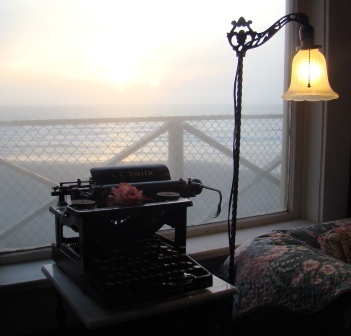 Welcome to Author Wednesday. Please give a warm welcome to one of my favorite authors, Christina Carson. Her novels are gems filled with wisdom and love. She’s here today to talk about her latest endeavor, Where it Began.
Welcome to Author Wednesday. Please give a warm welcome to one of my favorite authors, Christina Carson. Her novels are gems filled with wisdom and love. She’s here today to talk about her latest endeavor, Where it Began.
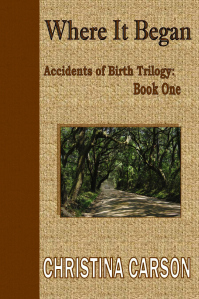
Click on cover for Amazon page
Where It Began: Book One of the Accidents of Birth Trilogy.
Breaking the Cardinal Rule
Patricia has been kind enough to interview me once before for Suffer the Little Children, once again for Dying to Know, and now a third time with my latest release, the first book in the Accidents of Birth Trilogy entitled, Where It Began.
I’d always been taught that a writer should stick to what they know, especially in matters of gender, culture, and race. I’d always been in complete agreement with that. Part of my commitment to the notion arises from simple logic, the rest because my favorite voice is first person. Thus, I’ve never felt adequate to have even a male protagonist in my novels because genders are universes unto themselves. However, on the day I met Imogene Ware, that commitment fell away, and though I may never feel need to do it again; Miss Imogene wooed me across the line, sweetly, humorously, and without a blink of judgment.
The Accidents of Birth trilogy is a story in three parts, all of which take place primarily in the last half of the twentieth century. The theme running through all three books centers on the fact that though we may hold tightly to many aspects of our lives out of our dire need for control, the one thing that is total happenstance, yet the most critical issue of all, is where and to whom we are born. Miss Imogene was a black woman living in the century’s-old freed-slave enclave called Small Town and born to a woman of deeply primal spiritual connections. Katie Gayle Sutton, a child prodigy, was born into a white family of adequate means, the father from New Jersey, her mother southern backwoods and fundamental, both living with their four talented daughters in rural Ellensburg, Mississippi. I tell you all this because this is where I became a fallen writer. It was not my intention to have a black protagonist. All along, I thought the child Katie Gayle was taking that role. So in explanation, if you’re curious, here’s the back story of my fall from grace.
It was a low point in my life. I had suffered my greatest fear, and it had changed nothing for the better. Unlike an alcoholic who hits bottom and then begins to rise, I just sat there in the mire of my life as desperate as I’d ever felt. I was in the middle of another novel and all of a sudden the idea of accidents of birth came floating into my consciousness. I brought up an empty screen on the monitor and sat staring. I realized in that moment that what I yearned for was a love I’d felt only once in my life, which was offered to me by two black orderlies when I was in hospital as a child. I was so stunned by their inclusiveness, their honesty and tenderness that I’ve never forgotten those moments over all these years.
As the beauty of that memory wrapped around me, I began to write with the intention of creating a character fashioned after those two people from the past, so I could be with them again until I found my way home. I wrote chapter one, and it just fell onto the page. I hadn’t intended the character I was creating to be the protagonist, as I feared all the ways in which my intentions could be misunderstood. The audacity of crossing race lines is usually attributed to a sense of outrageous hubris rather than what was driving me. I sat with the uninviting consequence of treading in unknown territory and all the discord that could arouse. But in chapter two, there she was, Ms. Imogene Ware, and she stepped up to the mike and took over the story.
I fell in love with her the moment she began to speak, fascinated by her, and I knew this was who I was hoping to find and spend time with. She didn’t allow me to reduce her part to a supporting role. She was the protagonist, and I just had to trust she knew what she was doing. My job became to record her experience and allow her to heal me in the process.
I don’t know who might take umbrage with this trilogy; if they need to, they will. But Dr. Martin Luther King, Jr. spoke to the likes of this beautiful lady when he referred to people of his race who served a slower but powerful route to freedom by seducing with kindness. I have lost count of the black women I’ve been privileged to know who stand in that place like Miss Imogene, offering a hard honesty and a sweet love born out of hardship and suffering. If there was any way I could help you to know them too, this is my best chance to seduce you with their kindness. For I am a writer and my books grow out of a yearning to share with people a more encompassing perspective, greater possibility and deeper love. And as I sit here finishing this interview, I can hear Miss Imogene encouraging me one more time with what she so often said, “You be fine, child, you be juss fine.”
Summary of Book One: Where It Began
Having accompanied her mother to the Sutton household since Imogene was 10 years old, she thinks she has learned the job sufficient to carry on when her mother is taken ill and dies. What she didn’t notice in those years of training, however, was that not only must she keep house, but also withstand the tides of the emotional storms that wash through the Sutton family. This first book covers ten years (1956-1966) of Miss Imogene’s initiation into life without her mother and into domestic circumstances she never imagined, all the while watching the world outside the Sutton household being rocked by racial unrest that is now touching even her isolated corner of rural Mississippi.
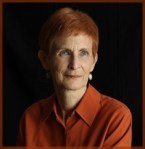 About Christina Carson: I am 68 years old and have worn many caps and walked many roads. I started in research as a scientist even before graduation, then taught in nursing for a number of years, owned a masonry contracting business with a mate and worked at that and building houses. I went on to farm. I am a creature of the land and love animals. That life was a dream until it ended. I then went on to become a stock broker, which I hated, and then the aimless period began with intense doubt and chaos. I was there for years making it up as I went along and spending a great deal of time afraid and despairing.
About Christina Carson: I am 68 years old and have worn many caps and walked many roads. I started in research as a scientist even before graduation, then taught in nursing for a number of years, owned a masonry contracting business with a mate and worked at that and building houses. I went on to farm. I am a creature of the land and love animals. That life was a dream until it ended. I then went on to become a stock broker, which I hated, and then the aimless period began with intense doubt and chaos. I was there for years making it up as I went along and spending a great deal of time afraid and despairing.
I will forever consider Canada my home, but I returned to the states in 1996 after 30 years in Canada to marry a man I met in Vancouver where I lived for five years. He and I are perfectly suited to one another in intent, direction and integrity and as for the rest, we play that by ear.
Click on titles below for Christina’s books:
Christina’s Social Media:
Twitter: @CarsonCanada
Websites:
Books that Entertain and Inspire
Asked and Answered
Many thanks, Pat.
C


May 9, 2014
Book Review Friday – Heart of Palm
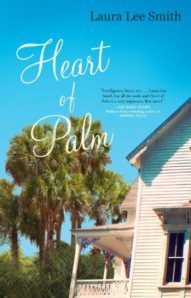
Click on cover for Amazon page
Laura Lee Smith’s Heart of Palm captured my heart first with its setting in north Florida where I lived for thirty years, and second, with its quirky Bravo family drawn in the best of southern family traditions.
The Bravo family lives in the fictional small town of Utina on the Intercoastal just a short drive from St. Augustine. The development all over Florida forgot this sleepy little village until one day it becomes apparent that this gem of a location might be the perfect spot for a new resort.
The mother of the Bravo tribe, Arla, came from the upper crust of St. Augustine society when she married the hapless Dean. A typical story, except that Arla is anything but typical, and her relationship with her husband is anything but a love story after the first forays of lust in the heady days of a Florida summer.
The family defines the overused concept of dysfunctional. Arla’s son Frank holds the family together the best he can while pining for the love of his life who just happens to be married to his brother Carson. It’s a messy pile of sand spurs on a desolate beach of missed chances and tragic accidents.
Just when the story falls into the Pat Conroy fold of family heartbreak and insanity, a developer happens along to perk up heads and hold out hands.
I loved the pace of the story and enjoyed getting to know the characters created by Smith. She knows north Florida and expresses her passion for Florida, although I would have enjoyed a bit more description of the landscape. That’s just my personal preference, especially when the setting is Florida between the Intercoastal and the Atlantic Ocean.
The title puzzled me, until I thought about it. The inner core of certain palms is called the heart of palm, and it is removed to create a tasty salad. At least I thought it was tasty, until I found out in some species of palms its removal results in death of the whole tree. The author doesn’t make this obvious, and I only figured it out because of my knowledge of heart of palm salad. The title Heart of Palm is well suited for the plot.
It’s sometimes difficult to write reviews with thorough explanations without using a spoiler. Therefore, I will simply say that the ending was not as satisfying as the rest of the novel. All in all, it’s a good romp through the sea oats and marsh grasses of north Florida and a grand visit with a southern family at its zaniest best.


May 7, 2014
Author Wednesday – Therin Knite
 Welcome to Author Wednesday. Today I welcome science fiction/mystery writer, Therin Knite. Therin is a college student, whose first novel Echoes was published this year.
Welcome to Author Wednesday. Today I welcome science fiction/mystery writer, Therin Knite. Therin is a college student, whose first novel Echoes was published this year.
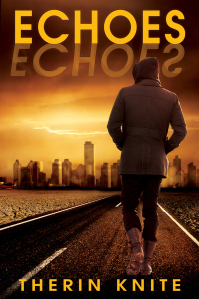
Click on cover for Amazon page
Welcome, Therin. It’s exciting to have such an accomplished college student as a guest today. It makes me wonder when you first discovered your voice as a writer.
Age fifteen. I had a grand idea for a story one day and realized it might be nice if I tried to write it down instead of just thinking about it. So I started my first manuscript. Seems like forever ago now, given how much I’ve been through since then. I was a sophomore in high school. Now I’m a graduating senior in college!
That’s a great accomplishment for a teenager. Do you have any specific writing rituals established yet?
Let me see. I rewrite the beginning of a novel at least three or four times before I get it “right.” Then I move on to the rest of the story, using the beginning as a reference for how to write the rest. Also, I generally write at night but edit during the day—I feel more creative at night and more serious and disciplined during the day, so I arrange my work accordingly.
That sounds like a good plan for success. Describe your current projects.
I’m currently working on a contemporary mystery/thriller, which I intend to be the first in a short series. I’m also working on the sequel to Echoes, called Epitaphs. The mystery/thriller is in the draft stage, and Epitaphs is in the planning stage; my goal is to have the mystery/thriller out by the end of 2014 and Epitaphs out by early 2015.
You’ve set a very ambitious schedule, but I’ve no doubt you’ll achieve it. Does setting play a very large role in your novels so far?
Setting in my books usually defines culture and thus defines how my characters perceive the world. It also influences their personalities. I go for settings that have complex social implications, like societies recovering from apocalyptic situations or experiencing rapid technological advancement, things that set up questions about identity, human nature, and the “correct” path for the human race. These questions usually filter into my characters’ personalities and back stories.
You started with science fiction and are working on a thriller. Are you planning to continue writing in these same genres?
I’m hoping to branch out into three different genres eventually: sci-fi, mystery/thriller, and urban fantasy. I have the first one already and a little of the second, since Echoes is a sci-fi mystery, but I’m looking to write more contemporary mystery/thrillers as well. I have a thing for police procedurals. For the urban fantasy—well, that’s my favorite brand of fantasy, and I have a few ideas brewing for that one.
I have to say these aren’t my genres, but I will have to check them out. I’m often pleasantly surprised when I step out of my comfort zone. What’s the best thing said about one of your books by a reviewer?
One thing? Almost everything my reviewers say makes me happy, but if I had to choose one comment, I’d say the reviewer who claimed I was in the top one percent of all Indie books he’d ever read. What a way to make me smile.
That would make me smile, for sure. You need to print that and put it near your writing space. How did you choose the title for Echoes? Has it always been the title?
I wanted something simple and easy to remember because the first book is also the name of the series. It’s had the same title since the beginning—Echoes—because that’s the name of an important concept that defines the series as a whole.
I’m always asked how long it took me to complete a novel. So here it is thrown to you! How long do you estimate it took you to take the book from an idea to a finished, published work?
Eighteen months. I don’t think that’s too bad for a first book, but I’m going to try and cut down my write-to-publish time for the next few. I had a lot of rewrites and editing to do for Echoes, and I ran into a lot of unexpected pitfalls. I think it was a good learning experience, seeing how different missteps cost me time and effort. Hopefully, I won’t make quite as many the next time around.
That’s not too bad from what I’ve heard and experienced myself. It’s been a pleasure to get to know you, Therin. And congratulations on Echoes and your college achievements. I hope you’ll come back when your next book is published.
About Therin Knite: Therin is a 22-year-old college senior who occasionally writes speculative fiction and has the odd delusion of literary stardom. Knite lives in a humble little place known as the Middle of Nowhere, Virginia and spends every possible second of free time reading books and writing what may possibly qualify as books. Echoes is Therin Knite’s first novel in what will be a futuristic sci-fi/mystery series.
Links to books and social media sites
Website: Knite Writes
Twitter: https://twitter.com/TherinKnite
Tumblr: http://knitewriter.tumblr.com/
Pinterest: http://www.pinterest.com/therinknite/
Goodreads: http://www.goodreads.com/user/show/13610995-therin-knite


May 2, 2014
Book Review Friday – Savannah’s Bluebird
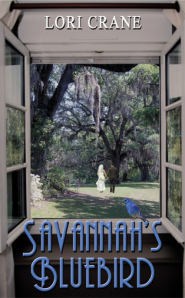
Click on cover to purchase
Lori Crane has done it again. She’s written another southern historical novel with unforgettable characters. Savannah’s Bluebird is set in the years after the stock market crash in 1929 in Biloxi.
The delightful story of the bluebird and its relation to true love stands at the center of this charming and magical tale of the vagaries of life and its various dips and turns.
Crane creates a haunting tale with a surprise ending. Savannah’s Bluebird is more of a novella, so to say anything more about it would be to give away too much of its intriguing plot.
I recommend Savannah’s Bluebird for a relaxing read on a rainy afternoon or a day at the beach this summer. You’ll be rewarded with a trip back to a different place and time with a few surprises on the journey.
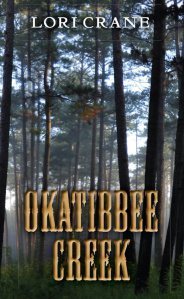
Click on cover to purchase
Recently, I had the opportunity to listen to the audiobook of another of Lori Crane’s novels, Okatibbee Creek.
From the very beginning, I was captivated by this story and its picturesque setting and its cast of characters making a life before, during, and after the years of the Civil War. The narrator of the audio tape, Margaret Lepera, provides just the right touch of a southern accent to make the narration of Mary Ann Rodgers’ landscape and personality leap to life.
Lori Crane is an exceptional storyteller of the Deep South. The ingrained notion of slavery is accepted by the characters and the fight over it through such a high price is puzzling to the characters of Okatibbee Creek. They end up freeing their slaves anyway as a result of the destroyed economy of this part of Mississippi. The strong female, Mary Ann, keeps families together and carries on the tradition of her father and mother in the love shown to all human beings. A life examined is one worth living and Crane presents us with one exceptional life worth examining in the audio or book form of Okatibbee Creek.


April 30, 2014
Author Wednesday – Lori Crane

Click on cover
Welcome to Author Wednesday. Today I welcome Lori Crane, the author of several books of historical southern fiction. Lori’s visited Author Wednesday last year and I reviewed her novel, Elly Hays for Book Review Friday. I’m so happy she returned today to tell us a bit about her new release, Savannah’s Bluebird.
Welcome, dear friend. I’m thrilled you’ve come to talk about Savannah’s Bluebird. Give us your one sentence pitch for the new novel.
Savannah’s Bluebird is a tragic love story that transcends the boundaries of this world.
It’s a beautiful title so I’m wondering how you chose it.
It took a long time to decide on a title. I knew I wanted the female character’s name to be “southern,” and I originally thought the setting would be Savannah, Georgia. I had the rough draft finished before I changed the location to Biloxi and gave the name Savannah to my heroine.
That’s interesting. I love the name Savannah for a female so it all fit together. How long do you estimate it took you to take the book from an idea to finished, published?
I wrote the outline and rough draft a couple years ago over a period of a month or so, and it’s been collecting dust in my computer ever since. I re-opened it December 1, sent it to my editor in January, and published in February, so a couple months, but it’s only a novella, not a full-length epic saga.
I know you’re an Indie Author, but how did you make the decision to self-publish?
I like having total control over every aspect of my work. I like to choose the timeline for writing and release, and even the cover design. If I published traditionally, those choices would all be taken away from me.
That’s true. I’ve gone both routes, and I love the independence of being an Indie Author. What message did you try to convey in Savannah’s Bluebird?
The obvious message is “Love is Eternal,” but an underlying layer shows how destiny and fate may have more important plans for you than you imagine. Everything happens for a reason.
I love it! It’s good to be reminded of that message. What is the best thing someone could say about this book?
“I didn’t see the end coming and had to read the book a second time from a different perspective.”
You did accomplish that, but I’ll save any more comments for my review on Book Review Friday. Explain how this book was conceived in your imagination.
I dreamt Savannah’s Bluebird a couple years ago and awoke at 4 a.m. in a cold sweat with my heart pounding. I had to write it down immediately and did so until the sun rose.
You were getting a message from somewhere! So happy you followed the muse.What type of research did you do in the writing of this book?
Once I decided on the setting and era, which didn’t happen until I had already finished the first re-write, I Googled every aspect of the 1930s from maps of Biloxi and New Orleans to railroads, from clothing and household appliances to automobiles.
Who or what is the antagonist in your book?
In this book, there are two—the ticking clock and a gunman named Bernard. I found both to be very frustrating.
Without giving us a spoiler, tell us a little bit about your favorite scene in this book.
My favorite scene is when Savannah is approached by a gypsy woman on the beach. The woman tells Savannah a bunch of cryptic things about the future and gives her a mulevi—an item to reach the dead.
That’s a good scene, with vivid characterization of the gypsy woman.What else do you want readers to know about this book?
This is the story that started my writing career. After I woke from dreaming it, I told my husband about it, and he said I should write a book. The next day, I told my daughter the story, and she said the same thing. That evening, I told my son, and got the same response. On the way home that night, we passed a billboard on the freeway that advertised “Publish Your Book.” Listen to the universe when it talks to you!
You are so very right (write), Lori. I’m glad you did because it’s a treasure of a story and came to you for a reason. Thanks so much for stopping by today and sharing the creative process for your latest work.
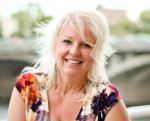 From Lori Crane: I started writing novels professionally in 2012, although before that, I wrote songs and television/radio commercials for a living. Since 2012, I’ve released five novels and have two more slated for release in 2014. During the day, I write; at night, I work on Norwegian Cruise Lines as a dueling piano player. When I’m not playing bawdy songs on a cruise ship, I reside in Tennessee with my trophy husband and a menagerie of critters, including a four-foot ball python.
From Lori Crane: I started writing novels professionally in 2012, although before that, I wrote songs and television/radio commercials for a living. Since 2012, I’ve released five novels and have two more slated for release in 2014. During the day, I write; at night, I work on Norwegian Cruise Lines as a dueling piano player. When I’m not playing bawdy songs on a cruise ship, I reside in Tennessee with my trophy husband and a menagerie of critters, including a four-foot ball python.
Links to Lori Crane
Website: http://loricraneauthor.com/
Blog: http://loricrane.wordpress.com/
Twitter: @LoriCraneHess
Amazon: http://www.amazon.com/Lori-Crane/e/B00ATIQW8M


April 25, 2014
Book Review Friday – Anne Rivers Siddons
“Trails in the Sand is Southern drama on the scale of Anne Rivers Siddons, where family secrets lie as deep as a mangrove swamp, skeletons molder in the woodwork, and the honeyed smiles of Southern belles mask seething resentment. -Clare Chu, Amazon top 100 reviewer”
When I received this review for my novel, I beamed for days because Anne Rivers Siddons sits at the top of my list of favorite Southern authors with Downtown and Outer Banks holding status as my favorites. However, several years ago, after reading five books of her books in a row, I reached my saturation point for her fiction steeped in Georgia and South Carolina sweet tea, so I took a break. In the meantime, she continued writing. After I received the review, I decided to go back and catch up with Siddons. She’s still producing books—nearly twenty.
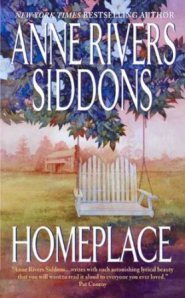
Click on cover for Amazon page
Homeplace, published in 2009, is available for the unbelievably low price of .99 cents on Kindle. I just checked, and it’s still at that price. Set in the fictional town of Lytton, Georgia, Homeplace hits on some very controversial subjects for Siddons. She goes back to the Civil Rights era where the main character Mike meets the wrath of her father when she skips school to attend a rally in Atlanta. This turning point in the novel becomes the pivoting event. Mike leaves home and attempts to find her way on her own, and she’s a successful journalist. But, as all things that are swept under carpets, the dust eventually rises and must be banished.
Siddons still has the remarkable ability to use language in a way that loses me in the writing. I find myself settling in with the characters, despite much of the predictability of the story. As Mike (Micah) begins her first foray into the center of the Civil Rights Movement in Mississippi, Siddons describes the surroundings many of the white young college students experienced.
“What they did encounter was a wet, relentless, juggernaut heat, a vast and feral army of mosquitoes, and empty, sleepy, one-gas-pump towns where they alit stickily from the buses long after dark and trudge wearily into identical rural Negro shanties at the end of dirt roads in cotton fields and pasture, to sleep on pallets and quilts in the endless heat, wash at hand pumps, use privies, and eat greens and grits and pork gravy for days on end.”
Whew—that’s all one sentence. Siddons’ dramatic flair in her prose creates the sense of the long and oppressive sense of the experience by the use of a long and almost oppressive sentence. But once the reader allows the words to wash over and around, the experience of reading Siddons becomes a journey into the world of the South. Sometimes a harsh place to be; sometimes a fake place to be; but sometimes a heavenly place to be.
I enjoyed the story for Siddons’ ability to create a sense of poetry in her fiction although I expect more from her in the plot she contrives in Homeplace. All the bad guys are easy to spot even when disguised with a fancy house. And all the confused folks are similar to other characters in her other novels. Perhaps this is the reason I took a hiatus from reading her books.
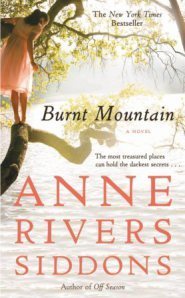
Click on cover for Amazon page
Burnt Mountain, published in 2011, is another enjoyable read. It captured me, although again the characters are somewhat predictable. The main character holds a place of disfavor with the mother, and ends up exacting a revenge of sorts by living the life her mother wanted. Set outside Atlanta in the fictional Lython, Georgia, Burnt Mountain is once again a vehicle for Siddons’ prose to shine on the pages. Here’s a passage as she describes the book’s namesake, Burnt Mountain.
“These are old mountains, among the oldest on earth, and they have been gentled by aeons of weather so that their peaks, though high, are rounded, voluptuous, instead of jagged like the newer, more savage, and often still-smoking mountains of the West. You will not drive long before you come to Burnt Mountain, the last of that dying chain, a great, wild excrescence that did not go gentle into the good night as its sister hills did but raged against the dying of the light.”
I simply love her prose even though again, I was slightly perturbed by the sameness of the Southern mother and Good Old Boy men. The main character Thayer has two major relationships during the course of the novel and in each of those relationships, the men give her a shower when she’s too depressed or distraught to do it for herself. They both scrub her down lovingly and wash her hair. How can one woman be so fortunate to have this kind of care twice in her life? Maybe I’m just jealous that it’s never happened to me. One time would have been sufficient in the novel. In fact, I found it endearing. But when it happened the second time with a different man, I found myself rolling my eyes.
I was also bothered by the mention of a cell phone being readily available in 1994. That seems rather early to have a cell phone. We might have had those big shoe-size car phones in 1994, but a regular old cell phone? That’s something an editor should have caught at her big publishing house. These may be picky things, but when an author is published by a big house with editors at the ready, more attention should be paid to the details and to the plot devices.
Both of these books are worth reading. Siddons is right up there with Pat Conroy in creating the troubled families of the modern South. I can only aspire to their stature. I also can learn from both of them. Repetitive characterizations and personality quirks can become annoying. Along with the poetry of prose created by Siddons in all her books, diverse plot and characterizations would keep me riveted to her writing and asking for more. For now, I’ve had my fix, even though I haven’t read all of her books yet.
Who are your favorite authors? Does it bother you when you start to see them writing in a formulaic way?


April 23, 2014
Author Wednesday – Marisella Veiga
Welcome to Author Wednesday. Today, I welcome a dear friend. Marisella Veiga and I met in 2005 at a luncheon for networking women. There was only one spot left in the large room when I arrived. I sat down to a beautiful, dark-haired woman with a welcoming smile.
“I’m Marisella Veiga, and I’m a writer,” the woman said.
“I’m a writer, too,” I answered. Out of all the people in the room, we were the only writers, and I’m certain something other than ourselves created that one empty chair next to Marisella that day.
I knew we’d be great friends. But what sealed our friendship that day was when she told me she’d just joined a group of women called Vintage Surfers, and she invited me to join as well.
“But I don’t surf,” I said.
“I don’t either, but it’s a blast to watch the others try,” she answered. “I use a boogie board.”
I joined her, and we’ve “boogied” together ever since by the bonds of mutual respect and a weird sense of humor at life’s sometimes funny and sometimes bitter ironies.
 I’m proud to introduce my friend Marisella Veiga who is an accomplished author, journalist, and professor. She recently published a cookbook, Cuban Rice Classics, and today she stops by to tell us how she decided to publish this fun and informative cookbook.
I’m proud to introduce my friend Marisella Veiga who is an accomplished author, journalist, and professor. She recently published a cookbook, Cuban Rice Classics, and today she stops by to tell us how she decided to publish this fun and informative cookbook.
Let me start with my vision of myself as writer: I decided to be a writer while running across the side lawn of our family’s house in Roseville, Minnesota. Something brought me to a halt. I paused and understood I wanted to be a writer. I was nine or ten years old. I was on my way to the little wooden fort three girls and I had hammered together beside a large tree.
When I graduated from Macalester College, also in Minnesota, I made a conscious decision to become the sort of writer who could write in any genre. This was a Latin American model, where writers worked on newspapers, had radio shows, worked as ambassadors. Meanwhile, they also produced fine literature. I knew finding work would be difficult and this model seemed to make sense.
At the time, most of the literary writers I had studied or met worked as academics in order to obtain the time to write. I did go on to graduate school for an MFA for the credentials and training in both writing and teaching. The safety net of being able to teach at a college was helpful. It still is.
As far as subject matter, over the years the topics that have caught my attention are connected to the Hispanic experience in the United States and those same Hispanics in their country of origin. Of course, Cuba and the Cuban exile experience are key. So in that sense, I would say the subject did choose me. But I am also tuned into Puerto Rico, the Dominican Republic; I am interested in Haiti. I have traveled to many Caribbean islands for various reasons.
Now, I am keen on finding cultural links between Florida and Cuba. The process of cultural assimilation among people also interests me.
For example, last summer my sister, niece and I rented a skiff to spend the day on Salt Run on the way to the St. Johns River in northeastern Florida. With the help of two very Southern, Central Florida men who were relaxing in the water near their boats, we got the skiff onto the bank. We sat in the waist deep water and talked with them while we cooled off.
Eventually, one man asked if we were Greek.
“No,” I said.
“He’s trying to find out where you’re from,” said another.
“Hang on to your hats, guys. It’s your lucky day!” I said. “We’re Cuban.”
“Cuban! Do you have some Cuban sandwiches there? I love those! What about Cuban coffee? Just love that stuff!”
We were glad for the positive response to what some of our immigrant culture had brought their way. Not everyone is welcoming.
My latest project has been to publish, as a joint venture with Rubber Tree Press in San Juan, Puerto Rico, a little cookbook called Cuban Rice Classics. I never planned on writing a cookbook, as cooking was not something I enjoyed. My mother was expected to study in order to become a professional woman and so she did: she was a pharmacist and optometrist. She could make simple meals. I was raised to be a good student; my grandmother and great-aunt did most of the cooking. They eventually taught me a few basics of Cuban cuisine.
But my friend the folklorist Tina Bucuvalas is the Godmother of this fertile project. She needed a Latin American home cook for the community cooking classes in Tarpon Springs, Florida, and she asked if I would do one. I was reluctant but agreed to it.
The first class sold out! When I learned this, I laughed and laughed at the irony of it. Sold out! If only I had tapped into this earlier! I had a great time teaching that class and bringing in pieces of Cuban history as well as family history. And since the students liked to cook, they were helpful in the kitchen. What could be better? Storytelling with food. It’s a great way to increase understanding about a culture. The students at Tarpon Springs have been delightful.
After this class I was invited to submit an encyclopedia entry on Cuban food in the United States for a book called Ethnic American Food Today that is forthcoming from Alta Mira Press. The research for that project—food histories—was a help as I could assemble a framework for what later emerged as Cuban traditional meals. What a great way to teach history!
I was happy when my friend Holly Iglesias, a poet, professor and master of Cuban cooking compared the cookbook to poetry. “It is small,” she said, “but has it all.”
If you go through and make the recipes in it, you will master a few basics in Cuban cooking. These include the basic saute called a sofrito, and of course, how to make rice. The book doesn’t go into more complex dishes like paella because I’ve never made one. I don’t want to make one.
Furthermore, I’ve included some cultural notes so readers will get a sense of how many different peoples contributed to the fusion of tastes that have formed Cuban cuisine.
I do plan to publish another cookbook. I have one in mind. For many people, the smaller book is attractive. It takes time to page through a larger cookbook in order to find a recipe that both appeals to you and matches your skill level in the kitchen.
A cookbook can bring so much pleasure—good food along with good stories. They are natural partners and, if readers allow me, I will continue to tell stories in this way.
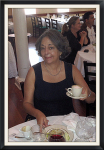
Photo by Louis Veiga
About Marisella Veiga: Writer and home cook Marisella Veiga was born in Havana, Cuba. She was raised both in St. Paul, Minnesota, and Miami, Florida. Her writings have appeared in numerous magazines and newspapers, including the Washington Post, Poets & Writers and Art in America. In 2004, she was given the Evelyn La Pierre Award in Journalism by Empowered Women International. She is a nationally syndicated columnist with Hispanic Link News Service. Many of these are recorded on a spoken word CD, Square Watermelons: Ten Essays on Living with Two Cultures. Many of her short stories, one of which won The Pushcart Prize Special Mention in Fiction, are in literary anthologies. Veiga’s essays also appear in Hispanic Outlook in Higher Education and Our Town magazines. Besides teaching part-time at Flagler College in St. Augustine, Florida, she has been giving Cuban cooking demonstrations at the City of Tarpon Spring’s Gulf Coast Folklife Center.
To purchase Cuban Rice Classics, click on the cover below.
 To contact Marisella Veiga, fill out contact form on this page.
To contact Marisella Veiga, fill out contact form on this page.


April 19, 2014
Real Life Seeps into #Fiction

Click here to grab Kindle copy for .99 cents during April
I’m often asked if real life seeps into my novels. As we head into the anniversary of BP’s Deepwater Horizon oil spill on April 20, I’ve thought about how much of my life seeped into the writing of Trails in the Sand.
During April 2010, two significant manmade disasters occurred in the United States. Both of the tragedies became a part of my life for the remainder of the year and led me to question how we live our lives. It took me some months to make the connection between the two events, but when I did, they both found a home in Trails in the Sand, the novel I began writing in late 2010.
The first tragedy occurred on April 5, when a coal mine exploded in West Virginia, several hours away from my new home in western Pennsylvania. Twenty-nine miners, trapped inside the mine, died that day. The local Pittsburgh news carried very little else as hope ebbed and flowed on the first days after the explosion. But finally, on April 9, the governor of West Virginia made a tragic announcement. All twenty-nine miners were dead and had not made it to the safety room as hoped. My husband works with the mining industry in his job as an engineer with a water solutions company. He knows the coal mining industry very well so we kept our eyes and ears tuned to the news, first hopeful as everyone else, and then, more than curious about how and why the explosion occurred in the first place. The answers became clear in the months following the deaths. The company, Massey Energy, had cut corners in safety procedures. The resulting reports are gruesome and indictments are still coming down for the highest echelon in a company that for a long time flagrantly disregarded the safety standards for coal mining.

Macondo well gushes oil after Deepwater Horizon oil rig burns and falls
Two weeks later, all eyes turned to the southeast of West Virginia when another explosion caused an oil rig to catch on fire and fall to the ground, exposing a deep well in the bottom of the Gulf of Mexico off the coast of Louisiana. On April 20, the Deepwater Horizon oil spill explosion killed eleven workers. For months, oil gushed out of the well unabated. Petroleum headed for the Gulf beaches. Within a few weeks, wildlife began appearing on the barrier islands covered and smothered in oil. The photos of birds immersed in a wet suit of petroleum played continuously on the news and horrified the world.
Even though I’d moved in Pittsburgh in April 2010, I was still working for the Florida Fish and Wildlife Conservation Commission as a public/media relations director until they found my replacement. The oil spill and the threat to Florida’s wildlife put my departure on hold for months. As I watched the news unfold about what caused the mine explosion from my home in Pittsburgh, I was fielding media calls, writing news releases, and pulling together facts sheets on oiled wildlife. By June, I was appointed to handle all the media during the sea turtle nest relocation project where 250 nests were dug up on the Panhandle beaches of Florida and eggs were transported to the Atlantic side of Florida for hatching and release. The project was unprecedented and received the attention of national and international media.
It didn’t take long for a culprit in the oil spill to have a name: BP. Once again, a large corporation sacrificed human and environmental safety in the pursuit of profit. My mind was churning and mulling over the connection between the two events.
In my spare time, I began writing a love story called In the Garden about two people reunited after a long separation. The subject began to have a life of its own. I wanted to write about my mother who died in 1998. Through various tidbits I’d gleaned over the years, I suspected that my mother gave birth when she was a teenager back in 1933 or ’34. I researched as best I could. I interviewed her only living sibling in 2011 and went through writings left by my mother and her father, my grandfather. My grandfather had been a miner in Cornwall until he came to the United States in 1900. When he arrived, he went to work in the copper mines in the Upper Peninsula of Michigan before giving his life to God and entering the ministry of the Methodist Church. Yes, my mother most likely became pregnant in a small Michigan town at the age of fifteen or sixteen, and she was the daughter of the Methodist minister. It scarred my mother for life, and in turn, it left its mark on her five children. I’ve spent my life recovering as I attempted to piece together my mother’s story.

female loggerhead
With all of these events and life histories swirling in my head, I changed the course of my novel and renamed it Trails in the Sand. I wanted to write a book about how we destroy things and then attempt to recover and restore, if possible. It begins with a teenager on a beach watching a sea turtle lay a nest on St. George Island, Florida.
The chapters on the BP oil spill and the Upper Big Branch coal mine disaster are from actual news clips and press releases. I used a description from my grandfather’s journal to describe the early years of the patriarch in the story. My mother’s story is weaved into the story as well. The main character, Caroline Carlisle is an environmental writer who sets out to write about the sea turtle project.
That’s how my novel came to life. I wrote Trails in the Sand to show it’s never too late to restore and recover from tragedy, and it’s never too late to find love.
How about you? Does real life seep into your fiction?


April 18, 2014
Book Review Friday – The Aviator’s Wife
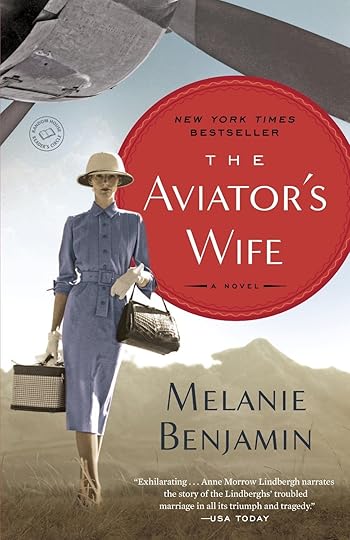 Last week, I reviewed Underground Angel by Dr. Sheryl White, which is an historical novel about the very real and heroic figure Laura Smith Haviland. I recently read another historical novel about a real person, which again brought someone who seemed fictional into focus as an ordinary person in extraordinary circumstances.
Last week, I reviewed Underground Angel by Dr. Sheryl White, which is an historical novel about the very real and heroic figure Laura Smith Haviland. I recently read another historical novel about a real person, which again brought someone who seemed fictional into focus as an ordinary person in extraordinary circumstances.
The Aviator’s Wife by Melanie Benjamin takes the life of Anne Morrow Lindbergh and brings us right into the living room and heart of this woman who married the world’s hero, Charles Lindbergh. They married in the heady years right after Lindbergh completed the first solo flight across the Atlantic in 1927.
From the start, this couple became the darling of the media, until it turned ugly. The Lindberghs were hounded by the press and the public. We think of the paparazzi and their ugly pursuit of the rich and famous as a modern evil. Through the fictionalized personal relationships of Anne and Charles and the use of very real factual accounts of their life, Melanie Benjamin creates a horrific tale of the dangers of turning people into icons.
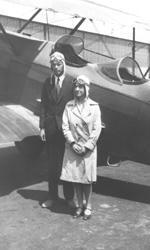
Charles A. Lindbergh and Anne Morrow Lindbergh – Courtesy of SDAM
Benjamin paints a sympathetic portrait of Anne Morrow Lindbergh as she delves into her personal life using biographies, Anne’s own books, and her letters. The novel shows Anne struggling to keep her family together and to keep her restless and self-absorbed husband happy. It’s an impossible job, particularly after she becomes a mother. Even in the first months of baby Charlie’s life, the couple knew they needed to shield their son from media exposure. Charles even limited the number of photographs taken of him for fear of someone in the household or their employ of selling them to the media. When Charlie is abducted, the worst side of humanity is exposed, as the Lindberghs deal very publicly with their very private death.
This time in Anne’s life is heartbreaking in its telling. This happened long before I was born, but still I knew of the Lindbergh baby kidnapping. It remains a well known story in the archives of American history. But to actually go inside the home and heart of Anne to feel her grieve and anguish at the loss of her son, is something else. Benjamin’s portrayal of the months of mourning cut through the black and white photographs of newsreels to the full on color of pain at the loss of a child. The outside world beyond the kidnapper himself was as scary as the actual event. People tried to give their own babies to Anne to make up for it. Even forty years after the event, people showed up on her doorstep to tell her they were her son, Charlie.
The personal story of this very public family gave me insight into the reasons we turn people into heroes. Many times it’s because of one thing they’ve done. Just because Charles Lindbergh could fly a plane and advise governments about air routes and airplane construction, doesn’t mean he was a good person in other areas of his life. Yet, we seek our heroes in those who hit home runs, throw touchdown passes, and sink three-pointers and seem surprised when they turn out to be only human.
Melanie Benjamin shows in her personal glimpse into a very public family, that the real heroes are the ordinary folks, such as Anne Morrow Lindbergh, who stay and take care of the family and tend to small, yet more important, elements of living a life of integrity and compassion. Mrs. Lindbergh had no idea what her life would be like married to someone whose fame made the world bow down in front of him. She soon found out, it required her to bow down as well.
Anne’s strength and wisdom soon brought her up to a standing position. I felt as if I was snooping behind the curtain in reading this book that exposes both Anne and Charles as very real human beings with all the foibles and eccentricities that implies.
I was slightly disappointed in the ending. Without giving a spoiler, I’ll simply say, the author was so detailed throughout the novel, until the end.
I recommend reading this book for a greater understanding of human nature and for a lesson in where we place our adoration and for what reasons. It’s also another view of an important piece of U.S. and World history as the novel takes place from 1927-1974, with a great emphasis on the pre-World War II years. Charles Lindbergh lost some of his stature in his loyalties, and it’s also a turning point in the marriage because of his beliefs.


April 16, 2014
Author Wednesday – Albert Isaac
 Welcome to Author Wednesday. Today I welcome author Albert Isaac who writes science fiction as well as humorous essays on life. His novels are Endless and its follow-up Utopia Revisited, which he recently published.
Welcome to Author Wednesday. Today I welcome author Albert Isaac who writes science fiction as well as humorous essays on life. His novels are Endless and its follow-up Utopia Revisited, which he recently published.

Click on cover
In this novel, Astronaut Kyle Lucas Metheny becomes an unlikely savior when his experimental flight goes terribly wrong. He awakes in a strange and unfamiliar future and learns he is there to fulfill a prophecy.
I must make full disclosure here. Back in 2005, Albert and I both lived in the same north Florida town and both were in transitions in our life. Albert had lost his job to downsizing and had just written his first novel. I was in the process of a divorce and starting a new job as editor of two magazines. We didn’t know one another until Albert showed up at one of my book signings. I tell him he came and never left. I hired him as a reporter and columnist for the magazines. Later, when I left to take another job, he replaced me as editor at Tower Publications in Gainesville. He’s still there, and thankfully, he’s still writing. He’s recently compiled some of his columns in the book Life So Far.
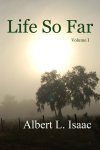
Click on cover
Hello, Albert. It’s wonderful you could visit today and talk about your life as a writer. When did you first discover your voice as a writer?
I was very young, maybe seven, when I wrote my first ‘book,’ Billy and his Bellybutton. It was a great hit with my parents and grandparents. I believe I made three issues (still have one!). Truth be told, my voice has changed since then.
That’s great, and I’m happy to hear you still have a copy. You wrote that book, but most of us take longer to actually call ourselves a “writer” or author. When were you first able to call yourself a “writer” or “author?”
Fast-forward about forty years, and I could finally officially call myself an author, after publishing my first novel, Endless, in 2005. The book isn’t a bestseller (yet!), but it launched my writing career and led to many great things.
I remember that day you showed up at the book signing. You seemed a little baffled by what to do next. I remember that feeling after publishing my first novel. I’m glad you’ve continued. Let’s talk about writing rituals? Do you have any you’d like to share?
Some people listen to loud music while they write. Some people need absolute silence. My needs are somewhere in the middle. I’ve written comfortably in coffee shops or sitting in the waiting room at the doctor’s office; early in morning or late at night. A lot of the writing occurs in my head as I’m driving the car, or (not) watching TV or lying in bed at night before falling asleep. I don’t have a specific ritual other than when I feel the urge to write, I jump on it. I’ve almost always had full-time work, so carving out writing time can be challenging. But when I’m in the zone, I become hyper-focused, and can produce a remarkable amount of work.
It’s amazing what can be done when the “zone” strikes. What is your vision of yourself as a writer?
I see myself as a novelist and columnist. I enjoy writing about the silly things I’ve done as a kid (and the lessons learned) as well as my life experiences as a husband, father (and now grandfather). My third book, Life So Far is a compilation of some of the columns I have written for local publications during the last five or six years.
It’s a delightful collection of essays, Albert. I found myself laughing out loud sometimes because you capture those silly little things we all do in life and then you turn it around into something positive. Rachel Carson (Silent Spring) said she never chose a subject because as a writer, the subject chose her. Describe a time when a subject chose you.
My first and second science fiction novels chose me. After losing my younger brother in an automobile accident, I began imagining a world without death. Endless sprang from that experience, back around 1978. Over the next several decades, I would go back and improve upon the original work. While I was re-working the final version, the sequel came to life. When Endless was published, I was already halfway through writing its follow-up, Utopia Revisited.
That’s an awful tragedy to endure, yet you were able to make something positive out of it. I’m sure your brother would be proud of you. Do you have particular messages or themes that you try to convey to your readers?
Hope. Humor. Positive thinking. I plan to one day write a book about the remarkable things that happen when we think (and act) in a positive manner. It is really quite remarkable. I very much look forward to writing my success story.
And I’ll look forward to reading it and applauding your success. Since you’re also a journalist, write a paragraph as a reporter writing about you for a newspaper article on up and coming authors.
“Albert Isaac knows a thing or two about death. After all, he spent five years working in a busy emergency room and another twenty working in the medical examiner’s office. But during his days dealing with the dead and dying – indeed, even years before entering these challenging occupations – he imagined a world without suffering. A world without fear. A world without death.”
Excellent. Your journalistic skills shine through! What’s next for you?
Currently in the works (available late 2014) is Life So Far, Volume II. However, for the past several years I’ve been contemplating a novel about my years working for the medical examiner’s office. Other projects have kept me occupied, but the time has come for Life in the Morgue to see the light of day, especially since there is such a great interest in this genre. Perhaps it’s also time to adopt some writing rituals!
I think you’re doing just fine without them. What knowledge have you acquired recently that might assist other writers?
Write what you know. Write first, edit second. I’ve known several writers who spend so much time re-writing their first chapter that they never finish the book. It’s easier to fix your completed story than to write a brilliant first draft.
I can’t help but edit as I go, but I don’t continue to rewrite until I’m all done. That’s good advice. Do all your books have a common theme or thread?
Life. I didn’t plan it that way, but the first two books are about the consequences of living forever, and my collection of columns is entitled Life So Far. Of course, the first two are science fiction books, and the most recent is about things that have actually happened to me. Life. My life.
We’ve talked about your messages, but what kinds of techniques do you like to use in your writing?
One night when I was stuck on a chapter, I jumped on to the middle of the story. On another occasion I decided to write the ending. Both of these techniques were useful because now I knew where the story was going. I could foreshadow upcoming events. I could pace my writing. I’ve also made outlines and sketched out timelines to be sure I stayed consistent. Sometimes the story flows so fast I can barely keep up with the inner dialogue; a character appears from thin air, complete with a name and a face, and takes the story in a completely unexpected direction. I have to ask myself, “Who’s writing this thing?” And you’d best not stop to edit – you just need to keep on transcribing.
You’re right(write) about that. We never quite know where we’re going to be taken. I’m amazed at authors that spend so much time outlining before writing. I never do that. Let’s talk about reviews. We all get them, but what’s the best thing said about one of your books by a reviewer?
“This science fiction novel truly validates the human soul. Readers quickly escape into a world where people of the twenty-sixth century live beyond 500 years but in doing so have surrendered to the siren song of technology (the grand elixir).”
What’s your one sentence pitch for Utopia Revisited?
An exciting peak into the future where everybody lives forever – almost everybody – and a stark reminder of the consequences of surrendering one’s freedom to technology.
How did you choose the title of Utopia Revisited? Has it been the title from the very beginning?
I tried to find a title that hasn’t been used too much. This was not the original title by any means, and I went through a dozen or more different ideas before finally settling on Utopia Revisited.
How long do you estimate it took you to take the book from an idea to a finished, published?
Eight years. Which seems crazy because I had written well over half of it by 2005. But life gets hectic. I never expected to take so long but I had a lot of new ideas that would have not been included had I rushed through just to hit one of my many self-imposed deadlines.
Sometimes that happens. My work in progress was started in 2006, and then, life happened. Is the book traditionally or self-published? Why did you choose one over the other?
Self-published. Part of the delay in publication was waiting to hear from a traditional publisher. When it was turned down (which, while disappointing, was not surprising) it took the wind out of my sails for about a year. I didn’t want to wait any longer and self-publishing put a book in my hand (and in online bookstores) within a matter of days.
Been there, buddy. I dropped out for awhile, too. Then I saw the revolution in publishing and decided to become a part of it. I’m glad you have, too. What is the message conveyed in Utopia Revisited?
The importance of individuality, free thinking and fully experiencing all that life has to offer – even the bad.
What is the best thing someone could say about this book?
Exciting. Thrilling. Imaginative. Story telling at its best!
Those are great comments. Explain how this book was conceived in your imagination.
While finishing Endless, the floodgates to my imagination flew open. As a follow-up, I wanted a novel that could address some unanswered questions, but that would also stand on its own. I was able to tell the back story through the eyes of a stranger from the past. You don’t have to read the first book to understand the second.
What type of research did you do in the writing of this book?
Not much. I fact checked some concepts but, being a work of science fiction, I had the luxury of using my crazy imagination.
Who or what is the antagonist in Utopia Revisited? Did you enjoy creating this character?
There were several antagonists – including a machine – and it was fun creating them. I even brought back the primary antagonist from the first novel.
Without giving us a spoiler, tell us a little bit about your favorite scene in Utopia Revisited.
My second favorite scene (can’t tell you the first) is a sequence of events where our antagonists catch up with our heroes and some serious conflict ensues. I had to switch back and forth between many simultaneous scenes – often very short – to tell the story in a fast-paced, exciting manner. I think it works. It does for me, anyway. But I’m biased.
Where do you write?
Typically in my home office on a desktop computer. However, I’ve been known to write anywhere on my laptop, from the recliner in front of TV to a cabin in the mountains.
What do you do during your down time?
Vacation with my family. Listen to music. Ride my motorcycle. Daydream. Bicycle with my boy. And watch WAY too much TV.
What book are you reading right now?
Zen and the Art of Motorcycle Maintenance – an Inquiry Into Values, by Robert M. Pirsig.
That’s a great book. Do you set your books in the place you live?
Part of Utopia Revisited takes place in my hometown of Miami. Naturally, all of my columns are set where I’ve lived (or vacationed).
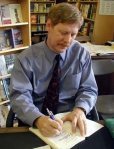 About Albert: Albert Isaac is a writer and editor living in north central Florida. Albert studied English, journalism, music and film at the University of Florida, and graduated with a Bachelor of Arts in English. He then followed the next most logical career path of any well-intentioned English graduate and went to work for the Medical Examiner’s Office and stayed twenty years. However, within him the writer remained and in his spare time he re-wrote a story he had started years before. In 2005, he published Endless. Albert is editor-in-chief for Tower Publications.
About Albert: Albert Isaac is a writer and editor living in north central Florida. Albert studied English, journalism, music and film at the University of Florida, and graduated with a Bachelor of Arts in English. He then followed the next most logical career path of any well-intentioned English graduate and went to work for the Medical Examiner’s Office and stayed twenty years. However, within him the writer remained and in his spare time he re-wrote a story he had started years before. In 2005, he published Endless. Albert is editor-in-chief for Tower Publications.
Links to books and social media sites:





